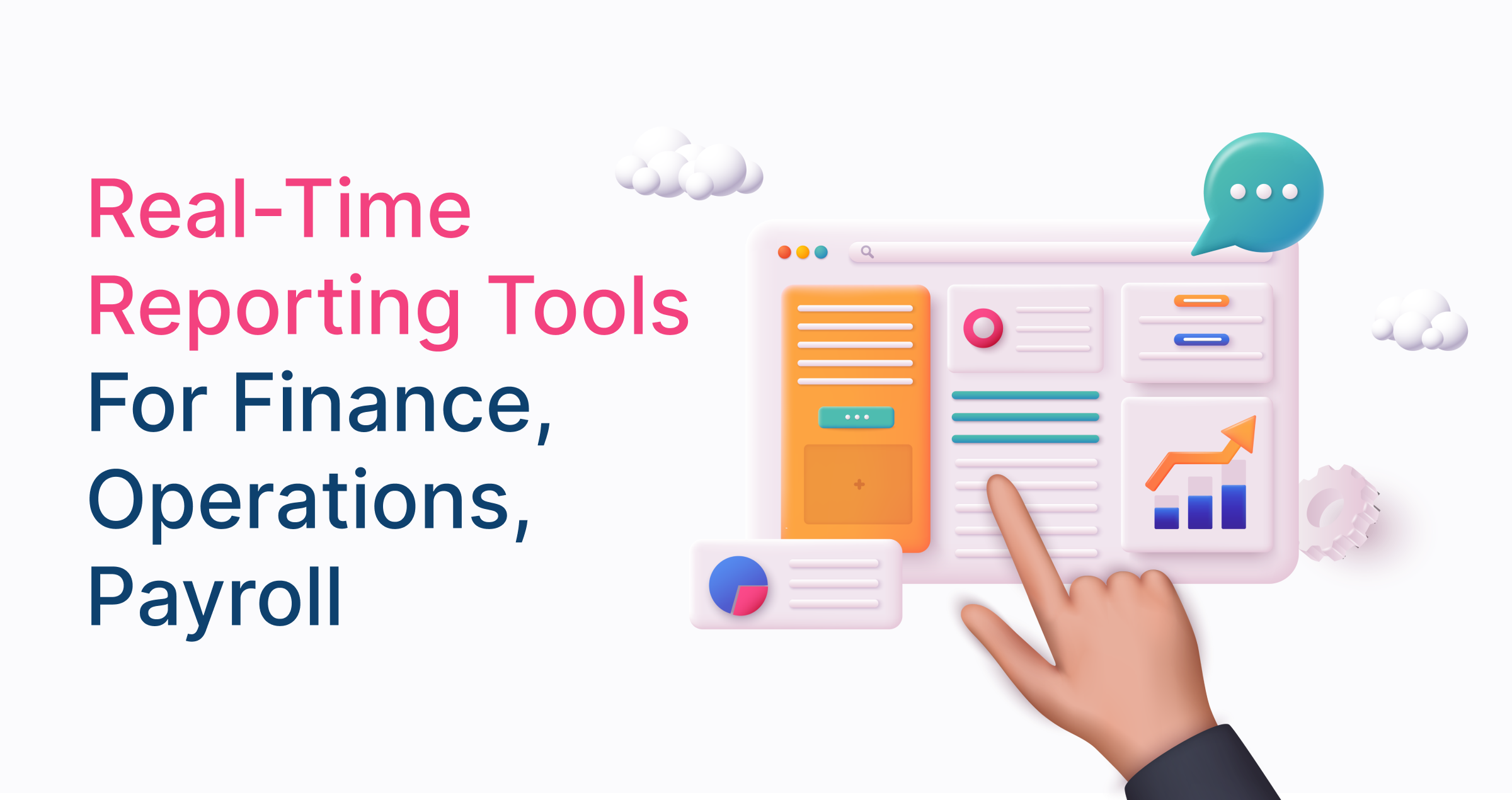
Real-time reporting offers accurate, timely data rather than waiting for batch processing and manual updates to reconcile data.
With the help of financial reporting tools, finance teams can access and share crucial data they can be confident in, all while reducing the burden of manual data management.
An Introduction to Real-Time Reporting Tools
Real-time reporting offers impressive benefits over traditional methods.
Financial reporting tools that use dashboards and other interfaces instead of spreadsheets offer a better way for teams to understand complex data. It is this ease of spotting trends, making sound financial decisions, and identifying mistakes that make real-time financial reporting a far better option in comparison to traditional methods.
Not to mention, real-time tools enhance collaboration across departments by allowing them to share information easily through more channels.
Think back to navigating with a paper map versus having digital maps updated in real-time at our fingertips—there’s really no comparison. Now, consider the difference between real-time financial data and getting critical financial information after the fact. Again, it’s hard to imagine why anyone would choose outdated software that doesn’t update finance teams in real time when there are powerful options like Datarails CONNECT at their disposal.
We’ll tell you more about CONNECT in a moment, but we’ll start by discussing financial reporting tools in general. What are their uses? How do they help management and promote better communication between finance, IT, accounting, and other departments? We’ll answer all of these questions and more.
Types of Real-Time Reporting Financial Tools
There are now all kinds of financial reporting tools available to companies, each with their own features and benefits.
Some organizations use one or a few, while others employ a variety of financial reporting tools to get the best results. The types of real-time reporting financial tools may include:
- Dashboards: For real-time monitoring and presenting key metrics and performance indicators
- ERPs: For managing and automating financial processes and data
- Budgeting and Forecasting Tools: For creating up-to-date and accurate budgets, forecasts, and plans
- Consolidation Tools: To help companies combine financial information from multiple entities or subsidiaries
- Business Intelligence (BI) Tools: For accessing, analyzing, and reporting on data quickly and easily through interactive dashboards and reports
- FP&A tools: For financial planning and analysis, including scenario planning and predictive analytics
The Benefits of Real-Time Financial Reporting
Next, let’s dig deeper into why more and more finance teams consider real-time reporting a non-negotiable for their business operations.
Reducing Manual Labor
In late 2023, a Zapier study found that over 75% of employees spend three hours just manually entering data. With that in mind, consider what it could mean for your organization if your team got those precious hours back and could instead spend them on higher-value tasks.
While all the benefits of real-time reporting are reason enough to pursue this option, reducing the time spent on manual data entry goes far beyond managing your team’s time.
Precision
Backed by powerful software, automated data collection significantly reduces the risk of human errors with data. With more accurate, timely, and reliable data, the odds of outdated information negatively affecting business decisions drop significantly.
Collaboration
Your team’s ability to work as one, collaborate, and make informed decisions intensifies when they have up-to-date data. Rather than banking on aged statistics, real-time reporting facilitates cross-department communication and a common understanding of financial reports.
Flexibility
Consider the flexibility real-time reporting offers and what it can mean for your team: with the right tools, you can access data and reports from anywhere at any time. This is especially valuable for teams with remote workers or those traveling for business.
Meet Datarails CONNECT
Datarails CONNECT is the latest innovation in our suite of real-time reporting tools. Designed to simplify the reporting process, Datarails CONNECT offers seamless integration with your existing ERP, CRM, and HRIS systems. Whether you’re in finance, compliance, operations, or payroll, this real-time reporting tool has what it takes to make you wonder how your organization ever lived without it.
Datarails CONNECT Features
- Easy Integration with any ERP, CRM, and HRIS: CONNECT works effortlessly with your disparate systems, allowing you to import live data directly into Excel.
- User-Friendly: Designed with being intuitive in mind, CONNECT is incredibly straightforward to use—onboarding is quick.
- Real-Time Reporting in One Place: Envision a comprehensive suite of reporting tools that provide all of your most important financial data in one place, instantaneously. That’s CONNECT.
Explore Real-Time Reporting with Datarails CONNECT
Don’t let another year go by relying on manual data management or outdated financial reporting tools—reap the benefits of real-time reporting for yourself with Datarails CONNECT.
Ready to experience the future of real-time financial reporting? Visit Datarails CONNECT to book a demo and experience the future of financial reporting.
Did you learn a lot about real-time reporting tools for finance in this article?
Here are three more to read next: